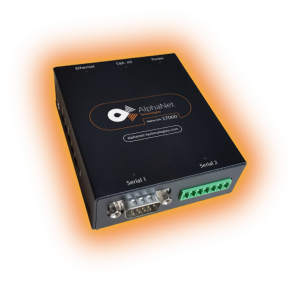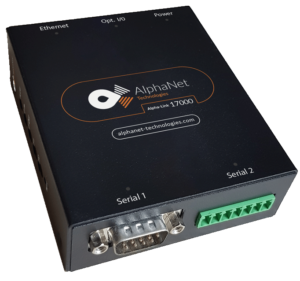In modern industrial environments, seamless communication between different types of hardware is essential for maintaining operational efficiency and flexibility. Supervisory Control and Data Acquisition (SCADA) systems are at the core of industrial automation, providing centralized control and real-time data monitoring. However, integrating legacy equipment or devices using different communication protocols can present significant challenges. This is where EtherNet/IP converters play a crucial role. These devices enable communication between SCADA systems and devices that do not natively support EtherNet/IP, allowing manufacturers to preserve their investments in legacy hardware while upgrading their control systems.
This guide explores the applications, benefits, configuration strategies, and real-world use cases of using SCADA with an EtherNet/IP converter, providing a comprehensive understanding for engineers, technicians, and decision-makers in the automation industry.
1. Understanding SCADA Systems
SCADA systems are used for supervisory management of industrial processes. They gather real-time data from remote or local devices, provide interfaces for human operators (HMI), and enable control over assets in sectors such as manufacturing, energy, water treatment, and transportation.
Key components of a SCADA system include:
- Human-Machine Interface (HMI): The interface through which operators interact with the system.
- Supervisory system: The central processing system that collects data and issues control commands.
- Remote Terminal Units (RTUs): Field devices that communicate with sensors and actuators.
- Programmable Logic Controllers (PLCs): Controllers used for automation tasks, increasingly replacing RTUs.
- Communication infrastructure: The network connecting SCADA components.
SCADA systems must often integrate with a mix of modern and legacy devices, which may use a wide range of protocols.
2. What Is EtherNet/IP?
EtherNet/IP (Ethernet Industrial Protocol) is a widely used industrial communication protocol developed by Rockwell Automation. It leverages standard Ethernet infrastructure and the Common Industrial Protocol (CIP) to facilitate real-time control and information sharing.
EtherNet/IP supports:
- Real-time I/O data exchange
- Message-based communications
- Device configuration and diagnostics
It is favored for its scalability, compatibility with commercial Ethernet hardware, and support by a large ecosystem of industrial devices.
3. The Role of EtherNet/IP Converters
An EtherNet/IP converter acts as a protocol gateway between EtherNet/IP and other industrial communication protocols such as Modbus RTU, Modbus TCP, DF1, ASCII, or DH+. These converters allow SCADA systems to interface with devices that do not natively support EtherNet/IP.
Common converter functionalities include:
- Protocol translation
- Tag mapping between systems
- Serial-to-Ethernet bridging
- Legacy-to-modern equipment integration
By using a converter, a SCADA system can send EtherNet/IP commands that are translated into a different protocol understood by field devices.
4. Applications of SCADA with EtherNet/IP Converters
Using SCADA with EtherNet/IP converters unlocks a variety of applications:
- Legacy PLC Integration: Connect older Allen-Bradley PLCs (e.g., PLC-5, SLC 5/04, MicroLogix) to SCADA systems over Ethernet.
- Modbus Device Integration: Allow SCADA platforms using EtherNet/IP to communicate with Modbus RTU/TCP meters, drives, and controllers.
- Remote Monitoring: Enable remote access to serial-based devices via SCADA over an Ethernet/IP network.
- Data Aggregation: Collect data from various protocols into a centralized SCADA dashboard.
- Industrial IoT (IIoT): Bridge data from non-IP devices into cloud-enabled SCADA or analytics platforms.
5. Typical Use Cases
- Water Treatment Plants: SCADA monitors flow meters and chemical injection systems using Modbus RTU via EtherNet/IP converters.
- Manufacturing Facilities: Integrates older serial-connected PLCs with a FactoryTalk View SCADA using RTA 460 or Moxa MGate converters.
- Power Distribution Systems: Consolidates data from energy meters and protection relays into a central SCADA over EtherNet/IP.
- Oil and Gas Pipelines: Interfaces remote terminal units (RTUs) using serial communication into an EtherNet/IP network managed by SCADA.
6. Converter Configuration for SCADA
Configuration involves the following steps:
- Physical Connection: Connect the serial or Modbus devices to the converter’s serial ports and SCADA network to the Ethernet port.
- IP Addressing: Assign static IP addresses to the converter and ensure network visibility from the SCADA system.
- Protocol Mapping: Define the data registers, coils, or tags that the converter should translate between protocols.
- Tag Definition in SCADA: Create matching tags in the SCADA HMI/PLC for data exchange.
- Testing and Diagnostics: Use the converter’s web GUI or configuration software to validate communication
8. Benefits of Using Converters in SCADA
- Cost Savings: Avoid replacing legacy devices.
- Scalability: Integrate more devices into the SCADA system.
- Interoperability: Support multiple vendors and protocols.
- Reduced Downtime: Real-time diagnostics and faster fault isolation.
- Data Centralization: Unified data access for dashboards and analytics.
9. Cybersecurity Considerations
Since SCADA networks are critical infrastructure, ensure converters support:
- Role-Based Access Control (RBAC)
- HTTPS/TLS for web configuration
- Firmware integrity checking
- Support for IEC 62443 cybersecurity standards
- Logging and alerts for unauthorized access
10. Challenges and Limitations
- Static Configurations: Some converters require manual tag mapping.
- Limited Protocol Mixing: Most models are fixed to a specific protocol pair.
- Lack of IIoT features: Few support MQTT or OPC UA.
- Scalability Constraints: Not ideal for systems with many devices without master controller architecture.
The integration of SCADA systems with EtherNet/IP converters offers a powerful solution to modernize and optimize industrial communication without incurring the costs of full hardware replacement. These converters enable seamless interoperability between modern Ethernet-based SCADA systems and legacy devices using serial or alternate protocols. By selecting the right converter for the job and ensuring proper configuration, facilities can achieve increased control, visibility, and efficiency in their operations. As industries continue to evolve toward connected, intelligent infrastructure, converters will remain a key component in bridging the gap between old and new systems in SCADA architectures.


